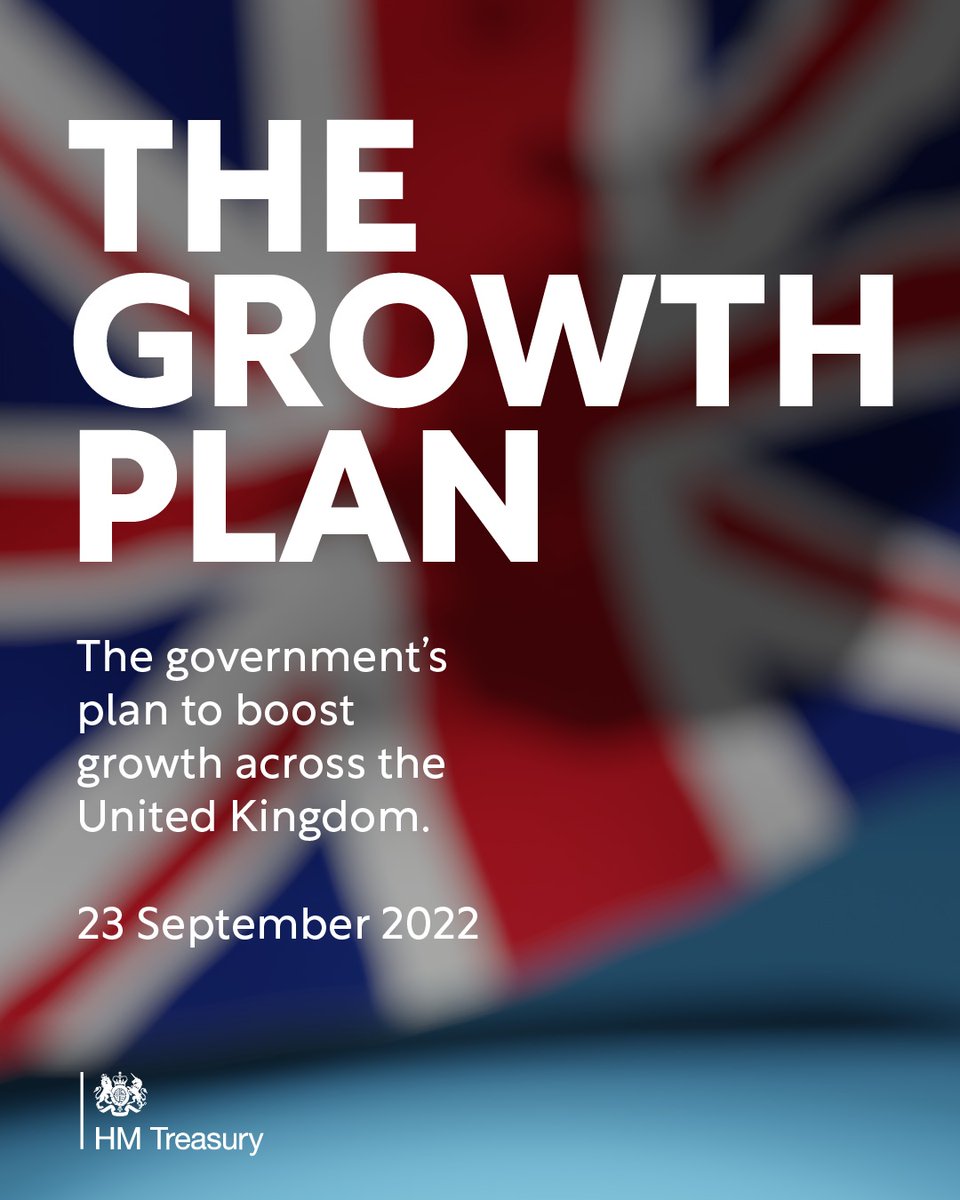UK Govt Delivers Supply Side Revolution: Aiming to Drive Innovation & Growth

London, UK. Prime Minister Liz Truss and Chancellor Kwasi Kwarteng discuss their Growth Plan ahead of a fiscal statement to the House of Commons on Friday 23 September. 10 Downing Street. Photo by Rory Arnold / No 10 Downing Street.
Amidst the current period of high inflation across the United Kingdom, the Chancellor of the Exchequer, Kwasi Kwarteng, delivered his Growth Plan 2022 to Parliament on 23 September 2022, which makes growth the government's central economic mission.
The wide-ranging Growth Plan makes good the government’s commitment to cut taxes for people and businesses, and commits to various policies to significantly reduce inflation and support growth in the short term, setting a target of reaching a 2.5% trend rate.
The Growth Plan is projected will have far-reaching consequences for the British people and economy. It aims to spur sustainable growth that will lead to higher wages, greater opportunities and provide sustainable funding for public services.
What might have been missed by the media, however, was the “help (to) expand the supply side of the economy,” in the hope to “unlock private investment across the whole of the UK,” Freddie Digby, CCO of Adsum, a fintech tax credit specialist, said.
According to Digby, “The Statement itself, as well as the headline-grabbing tax breaks, is also an ambitious drive to reform the supply side of the economy. This is where the real revolution lies.”

In response to issues raised by business groups about the pressures of inflation, the ever-increasing energy costs, and the rise in employment costs, the Government is aiming to reduce barriers to the flow of capital throughout the economy, which in turn is impacting investment decisions. Central to this is cashflow – a significant concern for businesses be they start-ups or not, no matter what sector they may operate in.
Access to funding and capital when the business needs it is absolutely essential and in recent years one of the few key stable sources of funding is the end of year tax credits, which takes businesses days to submit and HMRC up to six months to pay out.”
Digby continued:
“The Growth Plan detailed a number of specific initiatives aimed at increasing private sector investment. The cancelled increase of the main corporate tax level will grab the headlines, but the devil is always in the detail and the Growth Plan laid out plans to make permanent the temporary £1 million level of the Annual Investment Allowance, which was due to expire on 31 March 2023.
This is now expected to continue to support business investment, providing businesses with an increased level of stability and making tax simpler for any business investing between £200,000 and £1, in plant and machinery. Critically this means any business can deduct 100% of the costs up to £1m, in the first year.”
The Government has also committed to continuing to review Research and Development (R&D) tax reliefs. Since its initial review in 2021 was launched several reforms have been unveiled including data and cloud computing as new qualifying costs and refocusing the reliefs toward innovation in the UK.
“Alternative financing such as tax advances are going to continue to play an increasing role providing a financial lifeline, particularly in times as complicated as this – with alt-fi fintech's using technology to calculate the number of tax credits due and providing it when it is needed (not when HRMC gets round to do it),” added Digby. “After all, cashflow is king, and ironing out the financial bumps in the road is critical on the path to success for so many businesses, not least start-ups.”
HMRC can help – by either investigating whether VAT is expected to be paid or by refunding the VAT cost after payment. However, businesses often do not have time to open an investigation in such a fast-moving market. Waiting for HMRC to pay back that sizable 20% is not an option in such turbulent economic times when cash flow just to operate is needed. This issue is made worse by an HMRC plagued by understaffing and delays.
Tech-savvy businesses should view this VAT refund as an asset to leverage liquid cash flow against. A new generation of 'alternative-finance' (alt-fi) fintechs can ensure on-demand, consistent and calculatable capital without having to submit and wait for HMRC's refund.
"Sometimes, companies in a VAT refund position are happy to wait for HMRC to send them that money back. However, as wages, inflation, and energy and production costs eat into margins, growing businesses have even more reason to need consistent, resilient cash flow. This is made even more pressing when talking about a significant investment like purchasing a new commercial property” Digby said.
“It just shouldn't be that complicated – after all, HRMC guarantees your refund, but the issue isn't just having to find an extra 20% and surviving without it for months. With tax simplification embedded in this Fiscal Statement, and a clear and precise focus on growth, only time will tell if the Government has done enough to stimulate investment and help unlock billions in investment and scale and skill-up the UK for the future,” concluded Digby.




















